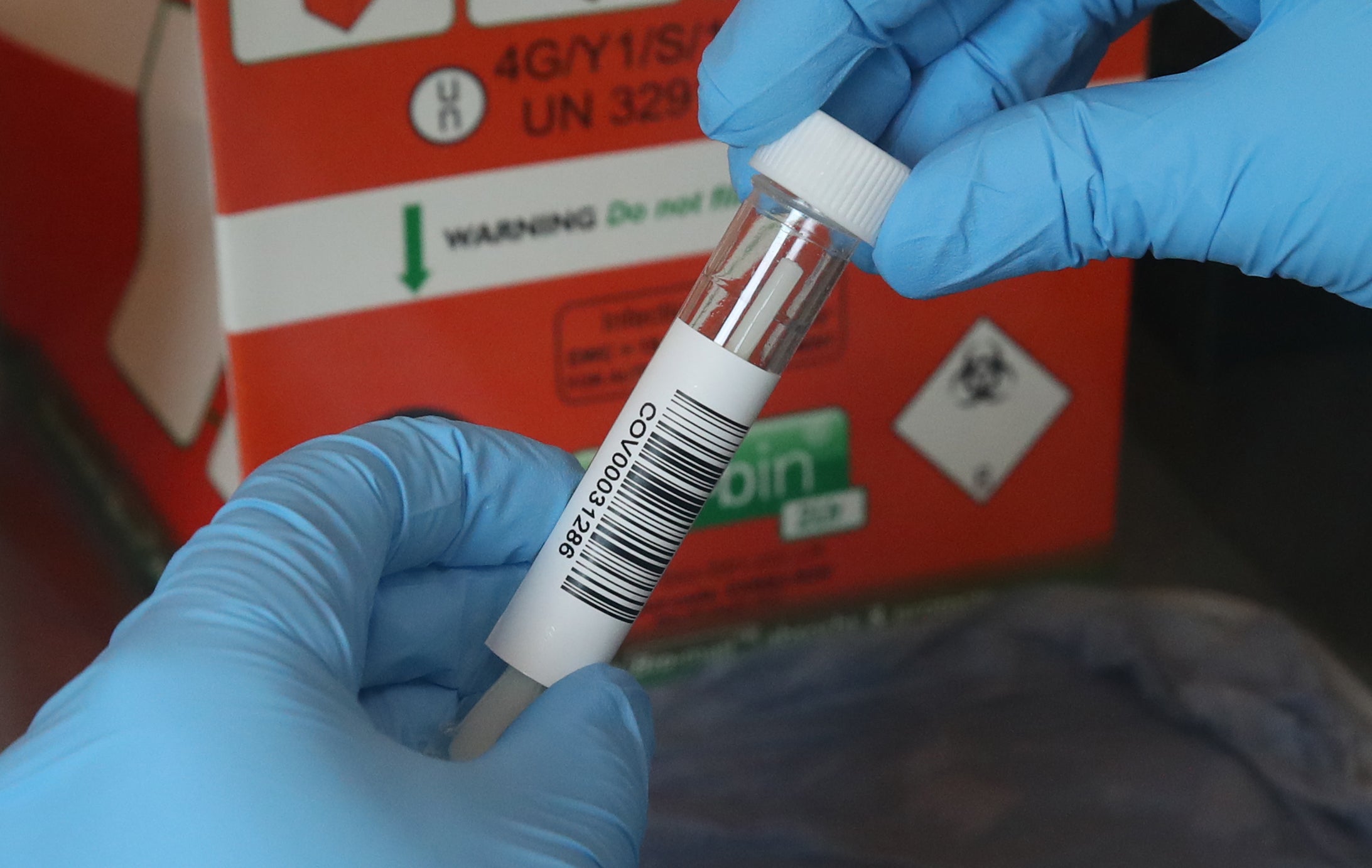UK Covid-19 infections fall for second week in a row
The ONS said prevalence of the virus has declined among all age groups.

Your support helps us to tell the story
From reproductive rights to climate change to Big Tech, The Independent is on the ground when the story is developing. Whether it's investigating the financials of Elon Musk's pro-Trump PAC or producing our latest documentary, 'The A Word', which shines a light on the American women fighting for reproductive rights, we know how important it is to parse out the facts from the messaging.
At such a critical moment in US history, we need reporters on the ground. Your donation allows us to keep sending journalists to speak to both sides of the story.
The Independent is trusted by Americans across the entire political spectrum. And unlike many other quality news outlets, we choose not to lock Americans out of our reporting and analysis with paywalls. We believe quality journalism should be available to everyone, paid for by those who can afford it.
Your support makes all the difference.Covid-19 infections in the UK have fallen for the second week in a row, in a fresh sign that the current wave of the virus has peaked, new figures show.
The number of patients in hospital with the virus is also on a clear downwards trend.
A total of 2.6 million people in private households are estimated to have had Covid-19 in the week to July 25/26, down 19% from 3.2 million in the previous week, according to the Office for National Statistics (ONS).
Infections have now dropped by more than a million in the space of a fortnight.
Dr Rhiannon Yapp, co-lead for the ONS Covid-19 infection survey, said: “Our most recent data suggests that infection rates have continued to decrease across much of the UK, although rates still remain high.
“We have seen continued decreases in all regions and age groups in England. With the summer holidays and more people travelling, we will continue to closely monitor the data.”
The latest wave has been driven by the Omicron BA.4 and BA.5 subvariants of the virus and saw weekly infections climb as high as 3.8 million in early July.
This was not as steep as the record 4.9 million infections at the peak of the Omicron BA.2 wave in late March, however.
High levels of coronavirus antibodies among the population – either from vaccination or previous infection – mean the number of people seriously ill or dying from the virus remains low.
Some 2.1 million people in England were likely to have tested positive for Covid-19 in the week to July 26, the equivalent of around one in 25, the ONS said.
This is down from 2.6 million, or one in 20, a week earlier.
Wales has seen infections fall to 108,800, or one in 30 people, down from 156,200, or one in 19.
In Scotland, 260,800 people were estimated to have had Covid-19 in the week to July 26, or around one in 20.
This is down slightly from 272,000, or one in 19.
Northern Ireland is the only UK nation where the ONS describes the trend as “uncertain”.
Infections there have dropped very slightly to 109,800, or one in 17, down from 113,400, or one in 16.
Among age groups in England, the percentage of people testing positive is highest for 50 to 69-year-olds, where infection rates are estimated to be 4.9% – the equivalent of one in 20.
The ONS infection survey is the most reliable measure of the prevalence of Covid-19 but will not be published next week due to a change in the way the data is collected.
The survey has previously been based on a sample of swab tests collected in person from households across the UK.
Participants in the survey will now have to return their swab tests by post, as well as complete a form online.
The ONS said it needs to carry out final checks next week before results from this new method are released for the first time.
Separate figures show the number of people in hospital who have tested positive for Covid-19 is continuing to fall.
There were 9,498 patients with the virus in hospitals in England on August 4, down 17% week on week, according to NHS data.
This is also down 32% from a peak of 14,044 on July 18.
Patient numbers in the latest wave have not risen as high as they did during the BA.2 wave, which peaked above 16,000.
Numbers have also remained well below the peak reached during the Alpha wave of infections in January 2021, when more than 34,000 patients with Covid-19 were in hospital in England.
It is a similar picture in Scotland, Wales and Northern Ireland, where patient levels are on a downward trend after rising for much of June and the early part of July.